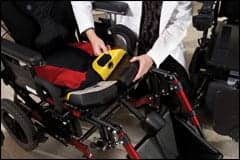Clene Inc along with its subsidiaries “Clene” and its wholly owned subsidiary Clene Nanomedicine Inc, a clinical-stage biopharmaceutical company focused on revolutionizing the treatment of neurodegenerative disease, announce multiple presentations of updated clinical trial results from the Phase 2 RESCUE-ALS and REPAIR trials in addition to new mechanistic preclinical data in ALS at the 2022 MDA Clinical & Scientific Conference, taking place March 13-16 in Nashville.
RESCUE-ALS Trial Results from Clene Nanomedicine
The first poster, titled “RESCUE-ALS Trial Results: A Phase 2, Randomized, Double-Blind, Placebo-Controlled Study of CNM-Au8 to Slow Disease Progression in ALS,” selected as an oral presentation, and the second poster, “Evidence for a Potential Survival Benefit with CNM-Au8 Treatment from the RESCUE-ALS Trial Long-Term Open Label Extension,” further support Clene’s lead drug candidate CNM-Au8®, a catalytically active gold nanocrystal suspension, as a potential disease-modifying therapy for amyotrophic lateral sclerosis (ALS).
RESCUE-ALS, a Phase 2 multi-center, randomized, double-blind, parallel-group, placebo-controlled trial examined the efficacy, safety, pharmacokinetics, and pharmacodynamics of CNM-Au8 in 45 participants with early ALS over a 36-week treatment period. In the 36-week blinded period, there were significant benefits with CNM-Au8 treatment: slowing ALS disease progression (p=0.0125), decreasing the proportion of participants with a 6-point decline in the ALS Functional Rating Scale Revised (ALSFRS-R) (p=0.035), and improving quality of life as measured by the ALS Specific Quality of Life (ALSSQOL-SF) questionnaire (p=0.018).
Updated Evidence for Survival Benefit
The second poster from Clene presented updated evidence for survival benefit with CNM-Au8 treatment that was reported from the RESCUE-ALS trial long-term open label extension for both the active and placebo groups. Interim analyses of observed survival compared to estimated median survival derived from the validated ENCALS prediction model significantly favored CNM-Au8 treatment with a hazard ratio of 0.3 for participants who entered the open-label extension (HR 0.3; p=0.01, log-rank test). CNM-Au8 was shown to be well-tolerated with no safety signals identified over 96 weeks of treatment.
Evidence for Brain Energy Metabolic Support
The third poster, titled “Evidence for Brain Energy Metabolic Support with CNM-Au8 Treatment: Results from Phase 2 REPAIR Clinical Trial With CNM-Au8,” demonstrated improved brain energy metabolism assessed by high-resolution magnetic resonance spectroscopy (31P-MRS). CNM-Au8 treatment resulted in improved brain NAD+/NADH ratio (primary endpoint, paired t-test, p=0.0371). This result was driven both by increase in NAD+ and a decrease in NADH (secondary endpoint, paired t-test, p=0.0264). CNM-Au8 treatment also resulted in homeostatic effects on brain energy-related phosphorous-containing metabolites, including ATP.
Study participants with whole-brain ATP levels less than the population’s baseline mean saw significantly increased ATP levels, while patients with baseline levels greater than the baseline mean decreased to the population mean (r2 = 0.711, p<0.0001). These data demonstrate CNS target engagement following treatment with CNM-Au8 and support its candidacy as a disease-modifying therapy for the treatment of neurodegenerative diseases associated with dysregulated neuronal energy metabolism.
Clene Nanomedicine CNM-Au8 Gold Nanocatalysis
The fourth poster accepted for presentation, “CNM-Au8 Gold Nanocatalysis Protects Neurons Against Degeneration and Death in Multiple in vitro models of ALS,” demonstrates CNM-Au8’s ability to promote neuronal survival and function in multiple independent in vitro models of ALS: (i) treatment of primary rat spinal motor neurons improved survival, preserves the neurite networks, and reduced cytoplasmic TDP-43 aggregate accumulation after either glutamate excitotoxic injury or exposure to beta-amyloid (Aβ 1-42) oligomers; (ii) treatment of spinal motor neurons from transgenic SOD1G93A rats protected motor neurons from death upon exposure to excitotoxic glutamate in a cAMP-dependent manner, and reduced SOD1 protein accumulation in a manner independent of cAMP; (iii) treatment of human induced pluripotent stem cell (iPSC)-derived neurons from C9ORF72 patients prevented neuronal death in response to stressors; and (iv) survival and neurite outgrowth of human iPSC-derived motor neurons in co-culture with toxic SOD1A4V ALS-patient derived astrocytes were significantly and dose-dependently improved with treatment of CNM-Au8.
“The preclinical and clinical data presented at MDA further support Clene’s lead drug candidate CNM-Au8 as a potential disease-modifying therapy for amyotrophic lateral sclerosis,” says Dr. Robert Glanzman, MD FAAN, Clene’s Chief Medical Officer. “We look forward to the continued advancement of the ALS clinical program with the top-line results from the HEALEY ALS Platform Trial expected in the second half of the year.”
Rob Etherington, Clene’s CEO, added, “This is an exciting time for Clene as we build a bigger body of scientific and clinical evidence in support of our CNM-Au8. Will continue to further the validation of our findings in neurological function and survival as we await results in larger clinical studies underway.”
About CNM-Au8, a Gold Nanocrystal Suspension
CNM-Au8 is an oral suspension of gold nanocrystals developed to restore neuronal health and function by increasing energy production and utilization. The catalytically active nanocrystals of CNM-Au8 drive critical cellular energy producing reactions that enable neuroprotection and remyelination by increasing neuronal and glial resilience to disease-relevant stressors. CNM-Au8® is a federally registered trademark of Clene Nanomedicine Inc.
[Source(s): Clene Nanomedicine Inc, GlobeNewswire]





